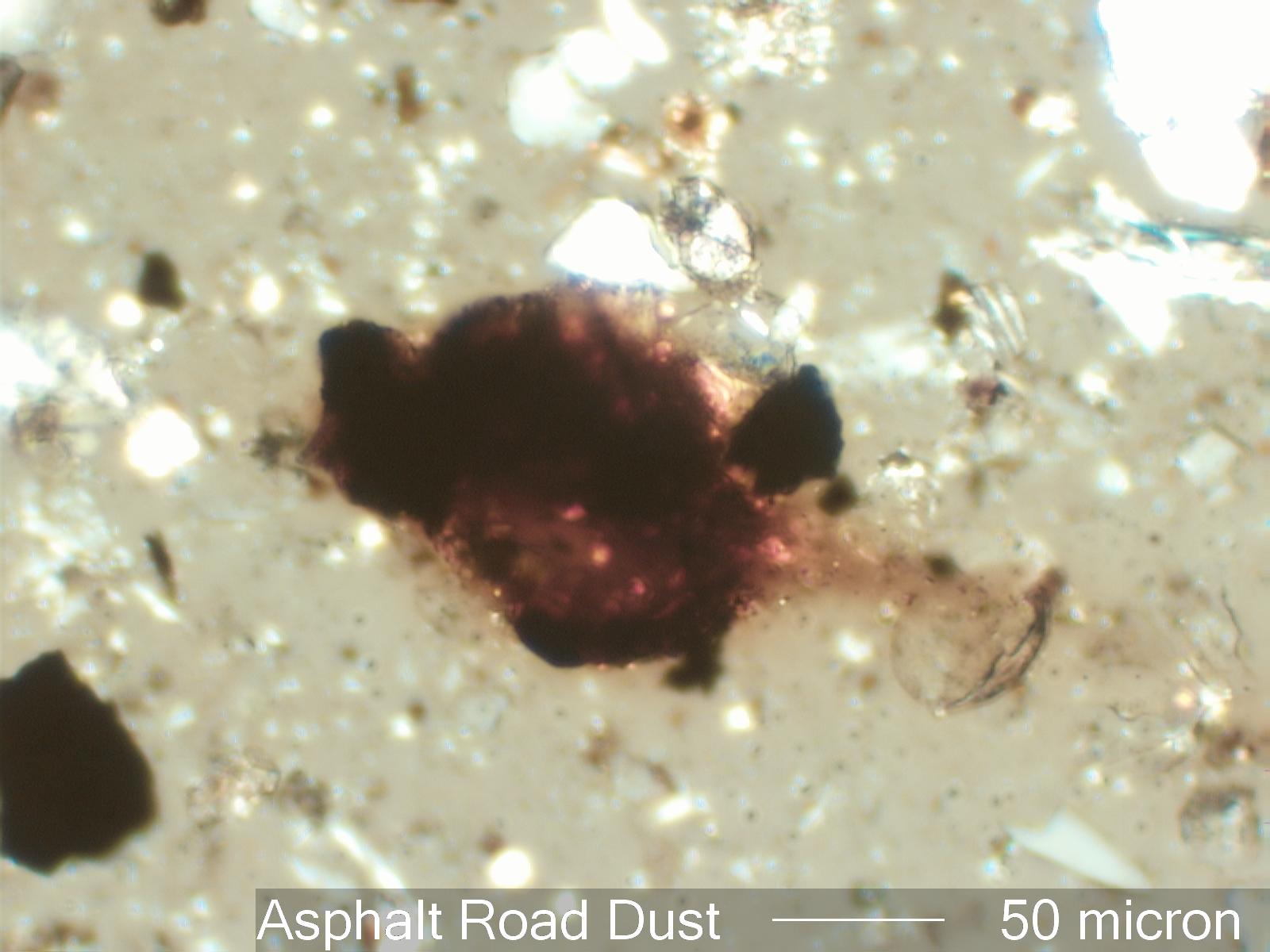Asphalt Particle
This is an asphalt particle found on a tapelift in an office near a major interstate highway.
Definition/Function:
This type of particle is part of a "Road Dust" assemblage.Significance in the Environment:
This indicates the presence of asphalt roads and the penetration of road dust into this environment.Characteristic Features:
The "bleeding" of the asphalt into the toluene soluble mounting medium is often present and is helpful in confirming that the matrix material is asphalt. The most characteristic particle of the Road Dust assemblage is tire wear. Occationally an asphalt coated mineral grain will be present, as in this case. The cenospheres tend to be small because mobile diesel engines are much smaller than the large fixed boilers of power plants or large ship. Wear metals, nitrate aerosols, and exhaust corrosion products can also be part of this assemblage.Associated Particles:
Road Dust is an assemblage rather than a single particle type. An assemblage is characterized by a set of particles of different types; tire wear, engine emissions, natural minerals, asphalt coated minerals, wear metals, nitrate aerosols, exhaust corrosion products, and "wet road" agglomerates can all be part of this assemblage. Each of these particles have multiple sources but when found in combination indicate relative proximity of roads.
The mix of Road Dust with pollens, spores, insect parts, plant parts, and other "exterior" particle types helps to characterized the nature of the exterior environment and entry path of the particles. Garages under a building, open windows, and door access directly from the street all have different mixes of particle types. Though these mixes overlap, multiple samples from the same site can often help differentiate these conditions.


